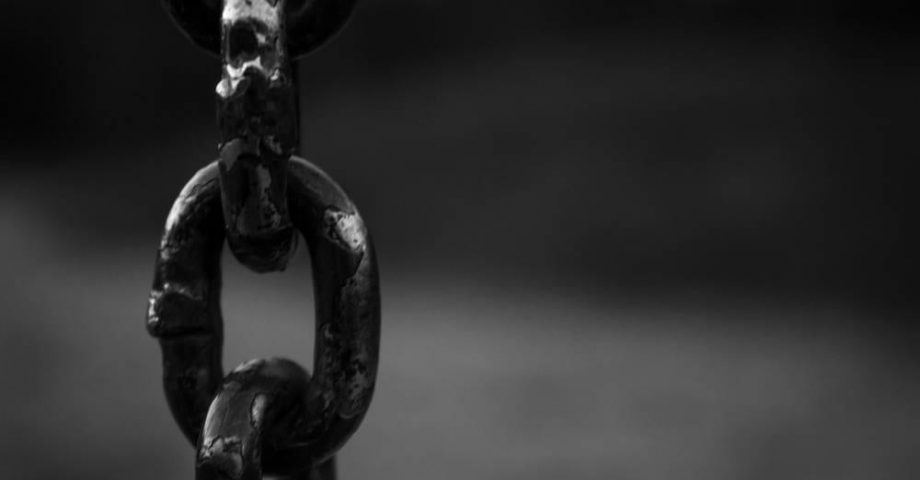Slavery was, and still is, a very real threat to human freedom. The very definition of the act of slavery is to hold someone against their will, and to coerce them into doing things they have the right to refuse. History lessons have taught us that slave trading occurred hundreds of years ago, however, modern slavery continues to be a horrific phenomenon continuing to occur all over the world.
In the past, slaves will have been traded for forced labour and for sexual congress. There are many organizations continuing to raise awareness of slavery in a world where we are supposed to be kinder and more aware of each other’s freedoms. In this fact file, we take a look not only at historic facts regarding slavery and slave conditions, but also to how much of an extent slavery is still a crisis in the modern age.
1. Slavery is very much ongoing.
It is thought that around 45 million people are thought to be kept in slave conditions worldwide. This may include conditions where people are held against their will even by people that they know. It will also include figures for sex and people trafficking, which is a horrific crisis still emerging globally.
In fact, the above statistics, derived from the Global Slavery Index, covers those who are indebted and thus slaves to money, as well as those who are forced into marriage without consent. The figures are thought to cover around 167 countries around the world.
2. Slavery was legal in Britain in 2009.
In the UK, slavery was still assumedly legal under statutory law until 2010. It was only in the April of that year when parliament passed measures to make all forms of forced labour illegal. Specifically, the original laws stated that slavery was still legal if the victim and abuser were in the UK or EU.
3. President Johnson saw a loophole.
While Richard Johnson, 9th President of the USA, took a slave, she became his wife in all but legal documentation – even bearing two children, who Johnson gave his surname to.

4. Slavery figures are shocking in the modern era.
It is thought that there are around 5.4 victims of slavery in the modern age per 1,000 people. Figures also show that the majority of these, around 70%, are female. These figures, again, can arise from forced marriages, labour, and sex trafficking.
5. The majority of slaves are female.
In fact, up to 99% of all slaves in sex trafficking are said to be female. It is also stated that girls and women make up to 58% of slaves in other forms of coercion.
6. Many are children.
It’s also stated that at least 25% of slaves worldwide are children and young people.
However, it is clear from ongoing reports that people of all ages, from all backgrounds, both genders and all nationalities, are falling victim to slavery. Up to 3,280 people identified by the UK Modern Slavery Helpline were male.
7. What are some of the more infamous slave trades from years gone by?
One of the most infamous slave trades from centuries ago was the Triangular Slave Trade. This system involved the UK largely trading in West African slaves from Portuguese traders. This process was called ‘triangular’ as British slavers would trade slaves from Africa through a middle passage, often across the Americas.
8. Why did people trade slaves from Africa?
Slaves from across Africa were largely traded for alcohol and weapons, with Spain, Portugal and the West Indies all having key roles in the triangular trade. It is thought that up to two million people, all slaves on their way to be traded, died during on route through the middle passage. This was largely as a result of cramped conditions on board slave ships, which would lead to spreading of diseases, and lack of treatments for scurvy, measles and more.
9. The slaves got nothing by the time the UK freed them.
By the time Britain came to free their slaves, compensation found its way to the owners and traders who would no longer benefit. The slaves, however, received absolutely nothing in return, other than their freedom – a basic right.
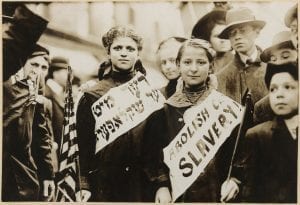
10. Millions and millions of people became slaves up to 1900.
It’s thought that around 12.5 million slaves made their way across Africa to North America through trades between the 16th and 19th centuries. As mentioned, many of them died as a result of appalling conditions.
11. Slavery was not cheap.
It’s thought that it would have cost the average American around $400 to buy a slave in the latter years of trading, with that equating to several thousand dollars in today’s climate.
12. It’s been an issue for as long as anyone can remember.
Slavery is thought to date back to before times of organised civilization. In fact, some believe that slaves were being bought and sold long before physical records even began. We do not have any way to know this for certain, however.
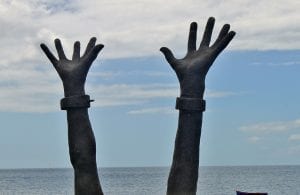
13. Slave ships ceased sailing long ago.
The very last slave ship to set sail and land was bound for Cuba in 1866. This is long after laws for slave trading were abolished.
14. Slavery occurred beyond the US.
While the US had a huge part to play in the slave trade – to the extent where repercussions are still felt to this day – not all ships headed straight for the Americas. In fact, the vast majority of those African people traded for slavery to the Americas would find themselves in Central and South America, in particular Brazil and areas of the Caribbean.
15. The slave trade first kicked off in the 1600s.
The slave trade, at least on the Atlantic basis, started in the 15th Century. It wasn’t until the 19th century that trading was abolished in the UK and US. However, trading persisted despite new laws until around the middle of the century. As stated, however, that has not stopped slavery being a very real and horrific problem continuing to ruin lives all over the world.
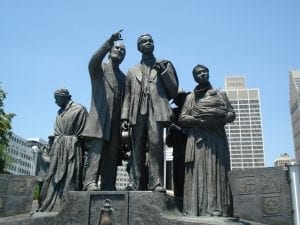
16. White supremacy has clear roots in the slave trade.
It is thought – through historic research – that much white supremacy now obvious across parts of the US have arisen due to a class system cemented during the slave trade. This is, many presume, to be as a result of the vast majority of slaves during the trade having come from west and central Africa. As a result, many white supremacists have grown up to believe that black people are naturally beneath them.
17. Money may have caused the slave trade to cease.
Some believe that the initial slave trade was actually abolished as a result of money. This is the belief of one historian, Eric Williams, who would eventually become Trinidad’s Prime Minister, who proved that trading was making less and less money as it went on. It was Williams’ suggestion that slave trading was actually abolished due to the lack of money it continued to make – not as a result of any major changes in conscience.
18. Mississippi didn’t recognise the end of slavery until 2013.
In the US, the slave trade abolition needed to be ratified in member states before they would each bring laws into their own locales. Mississippi was the last to ratify the amendment to the Constitution – the 13th – as late as 2013. This was as a result of an oversight, as it’s thought that at the time of the amendment’s launch, many traders were angry at not receiving financial reparation for losing slaves.

19. President Buchanan was another who sought loopholes.
James Buchanan was US President at the height of slavery in the country and was actually opposed to the practice – a rarity at that time. However, he continued to trade in slaves himself, though using certain rights to work his way around the constitutional wording. Specifically, he would buy slaves and then free them, having them work as servants for him. This way, he was keeping things neutral, while doing his part to ease the pressure of slavery on innocent people.
20. A famous author was a victim of slavery.
Cervantes, the famous Spanish author responsible for Don Quixote, spent up to five years as a prisoner and slave of pirates from the Ottoman Empire. His parents would eventually free him through paying a ransom, though he’d attempted to escape his captors multiple times over.
21. Slavery goes beyond human civilization.
Slavery is not just a human phenomenon. It is clear that some ants – up to 14 different species – have the presence of mind to actually kidnap those from other colonies to hold as slaves in their own camps.

22. Religion may have stopped slave trading at the beginning.
It’s thought that initial plans to trade slaves from Africa directly to Spain were scuppered due to fear of spreading religion – specifically, anything deemed to be non-Christian. King Charles V changed matters, bringing direct trading in, but forcing slaves to undergo brainwashing to Christianity on route. It’s this move that inarguably led to the slave trade expanding further afield.
23. Many millions of slaves go accounted for.
While the figures listed above show that many millions of people were traded during historic slavery, the actual number of people coerced into travelling from Africa remains a complete mystery. It is thought that around 20 million people likely died across the centuries, though it is unclear as to how many people were actually bought and moved on during the process. In any case, it is shockingly barbaric to see how many lives were treated with such woeful abandon.
24. The Romans also dealt in slaves.
Slavery had its place in Roman times, too. They would often wait on members of society deemed important, and it was not uncommon for people to trade in slaves generally in the community. Bizarrely, there was a designated season – called Saturnalia – where slave owners would actually trade roles with their slaves temporarily.
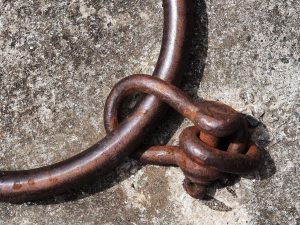
25. Slavery is said to be bigger now than ever.
It’s thought that there are actually more people currently affected by slavery than there has been at any given point in history. Therefore, despite the greatest will in the world and all the right laws coming into play, slavery is still a grave concern that requires constant vigilance and action.
26. Slaves were traded for common goods.
It’s thought that in the 18th century, a slave would cost around £3 on average. This means that they would normally trade for a small amount of gunpowder or alcohol. It was not uncommon for people to trade everyday goods for slaves.
However, these prices tended to be much higher in the West Indies at the time, reaching up to £20 per person traded. Therefore, many sought trading in the Americas to be a particularly lucrative business – hence why it persisted for so long.
27. It’s where ‘chain gangs’ come from.
Slaves would traditionally be marched along together in chains and would be held captive in prisons and jails that traders would refer to as ‘slave factories’.
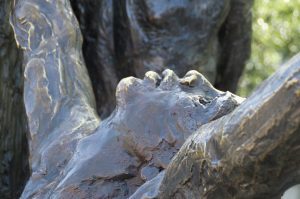
28. Many slavers lived in Africa.
It’s thought that many British people involved in slave trading would actually live in Africa themselves, choosing to buy people from local tribe chiefs. However, many were actually captured and kidnapped unawares.
It was, naturally, occasionally the case that chiefs would refuse to let their people go to slave traders. In the most extreme cases, village communities would get their people back from slave ships by setting them alight. Slaving was a process which was – thankfully – not always treated as the ‘done thing’.
29. Slaves have fought back time and again.
Slaves led multiple rebellions and revolutions during the trade. Toussaint l’Ouverture, for example, was a slave who mounted a huge rebellion in Saint Domingue towards the end of the 18th Century.
30. William Wilberforce is a key name in the abolition of the slave trade.
It was William Wilberforce who helped to put wheels in motion for slavery to be abolished in the UK. From 1789 to 1807, he would regularly campaign in parliament for the abolition of slavery, having presented a yearly bill to the houses to push for such conditions to be made illegal. It wasn’t until 1806 that ships were banned from shipping slaves from the UK out to colonies of France. This, ultimately, helped to rank down the trade by at least 60%.
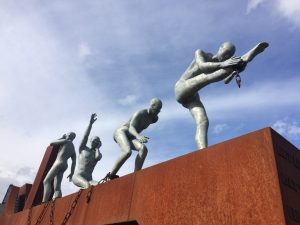
31. The President’s domicile is partly slave-built.
Believe it or not, the White House in the US – where the President continues to reside to this very day – was actually part-built by slaves. It’s thought that the government in place at the time actively bought slaves to build the construction, though they did not own any slaves outright.
32. Not all slave owners were white men.
It is a common misconception that all slave owners during the trade were white. In fact, one of the very first people to own slaves in the US was an Angolan man, Anthony Johnson, who had his own slaves despite having earned his own freedom.
33. Slavery is NOT a ‘historic problem’.
Modern slavery is a very real crisis, and one which requires more action and awareness than every before. As mentioned, slavery is affecting more people in the world at once now than it ever has.
If you would like to know more about the work people are doing to combat slavery in the UK and all over the world, make sure to take a look at AntiSlavery.org. You can also make a donation and find out how you can personally take part in the fight against modern slavery.
FAQs about Slavery
Was slavery ever legal in the UK?
Technically, slavery was never officially enshrined in law in Britain - but that didn’t stop people from owning slaves.
Is slavery legal in India?
No - slavery has not been legal in India since 1861, meaning it is very much a criminal offence.
Is slavery illegal everywhere?
Shockingly, according to UN reports, up to 94 member countries - out of 193 - still don’t have laws against slavery enshrined.
Do you know any interesting facts about slavery? Share them in the comments below!
